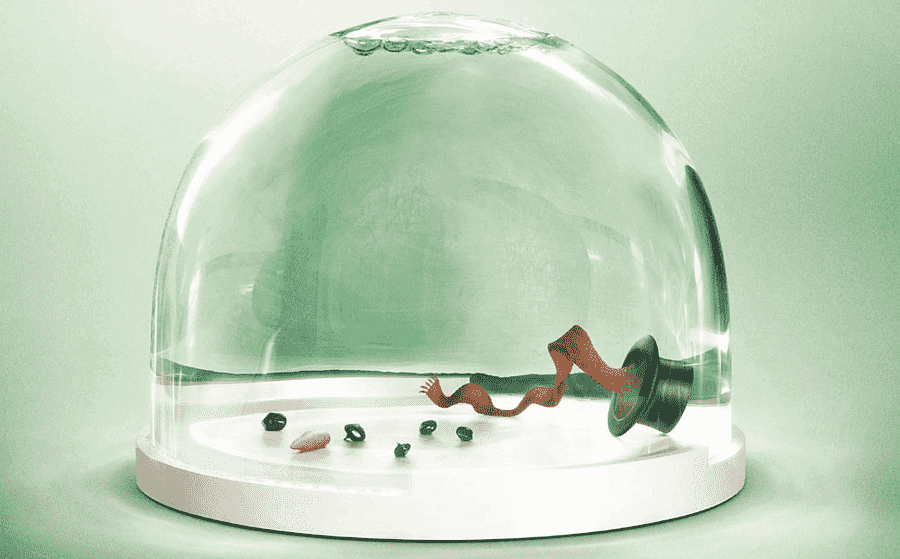A Winter Christmas?
Before repeating the sentiment of “where is the snow”, let’s gear that energy into the deeper, more obvious issue…climate change.
Christmas campaign ad from Greenpeace. Picture via adforum.
November has passed, December has begun, and once again, the excitement of the holidays is creeping upon us. With holiday songs replaying in every single store, and winter treats infiltrating our senses, it seems as though whether we like it or not, the recurring festivities are back again!
The celebration has been ramping up throughout the last few weeks and people are getting back into the holiday spirit. However, there seems to be some sort of void this Christmas season, you could say ‘Christmas spirit’ is not quite like it was a few years ago. Part of it might be how arguably the most vital and essential character of the holidays has not even come to say hello. So… where is the snow?!
Christmas and its festivities have always thrived the most with the backdrop of white snow covering the grounds. Now, given the lack of snow, it feels as though this should be more of a growing concern. Around this time of the year, just 4 years ago in 2020, not only were the first few snowfalls already occurring on odd days, but centimeters of snowfall was seen throughout November. Though now, in 2024, it seems winter keeps calling in late.
“Where is our white Christmas?” people seem to question. This observation is a blaring and obvious sign of urgency that can be understood when you think about the reason for the lack of snow. Now by questioning it, do we really grasp the severity of this red flag?
Climate change has been an impending doom on the world, more so now than ever before. The climate scientists have repeatedly warned us over the past few decades about this worldwide issue, but the actions of world leaders, political actors, the rich profitors and most confusingly, those who still do not believe in climate change, have intentionally pushed this issue under the rug. Climate change seems to always be a background issue to be dealt with, when it should be our primary concern.
The damage has now dug deep, so deep it is looking irreversible. In Union Square, New York City, there is a giant clock counting down to July 21, 2029. The purpose of this clock is to spread awareness of the emergency end date of when climate change is believed to be irreversible. We are in the final month of 2024, leaving us less than five years to make major changes. Five years before reaching the average temperature of 1.5°C, the hard limit when carbon dioxide (Co2) produced by human-led gas emissions influences global temperature. In short, there will be no going back.
The Climate Clock located in Union Square, New York City. Picture via Climate Clock.
We can take a look at the possible impact climate change can have on UTSC’s very own campus farm. The farm is used for research purposes, holding native Ontario plants, and used as a classroom to inform students and the community about the herbs, crops, flowers etc. The possible impact of the weather on the beloved farm is something to take note of.
With the weather changing so often, from 13°C one day to 2°C the other, it could cause multiple problems. This includes creating inconsistent soil temperatures—which make it harder for seeding and harvesting crops to grow correctly, blossom loss, and an overall decline in crop quality. This potential impact on the farm is a small display of what is happening all over the world. Places who face long, cold winters, but also places with extreme heat, causing destruction on farmland.
The question now is… what is it going to take? There is the obvious retort of some that we can not do anything to change this, but is that not the exact reason why we are heading towards disaster? This unjust cycle of those who carry the weight of others that do not take any action or accountability is something we cannot afford anymore. With the lack of action, other issues are continuously pushed to the forefront, which snowballs into, once again, sweeping climate change under the rug, as power and money always succeed, even in dire times. There is no leeway here.
This is not someone else's problem, this is our problem, because we see it, and soon enough, we might feel it. The first step is awareness, which can accumulate into taking action. With action, it can further lead to the urgency in pushing our leaders and making small environmental adjustments in our daily lives, which is a start that will collectively create impact to bigger changes. These changes will push for the rich elites and government to make drastic moves within their country.
The privilege of missing out on a white Christmas is nothing compared to those who are directly affected by the impact of climate change. Droughts, sea levels rising, famine, natural disasters, raging heat, loss of crops, and many, many more extreme impacts are happening right now. So will we then only start to care and demand action, when we experience these impacts ourselves? Is that what it takes to notice and panic? Because by then, it might be too late, and our time to reverse this damage might be up.

